Trump just assaulted the independence of the nuclear regulator. What could go wrong?
By Allison Macfarlane | February 21, 2025
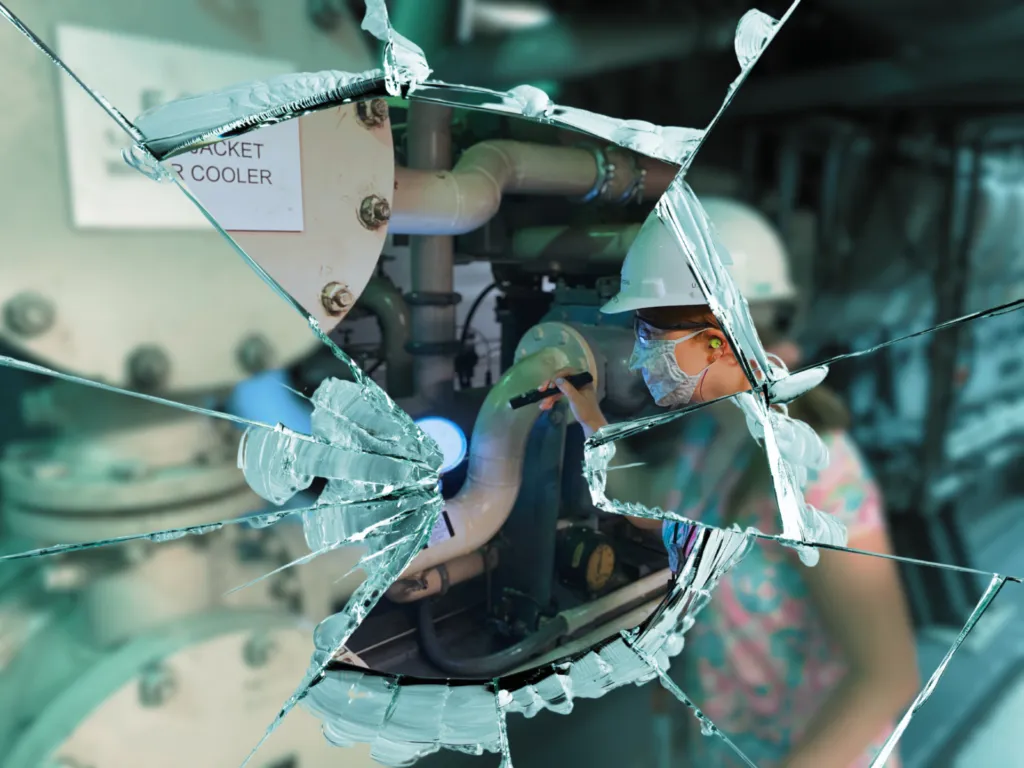 Photo illustration by François Diaz-Maurin (source photographs: US NRC/Flickr, brainmaster/Getty Images Signature/Canva)
Photo illustration by François Diaz-Maurin (source photographs: US NRC/Flickr, brainmaster/Getty Images Signature/Canva)
President Trump, through his recent Executive Order, has attacked independent regulatory agencies in the US government. This order gives the Office of Management and Budget power over the regulatory process of until-now independent agencies. These regulatory agencies include the Federal Elections Commission, the Federal Trade Commission, the Securities and Exchange Commission, the Federal Energy Regulatory Commission—and my former agency, the Nuclear Regulatory Commission, which I chaired between July 2012 and December 2014.
An independent regulator is free from industry and political influence. Trump’s executive order flies in the face of this basic principle by requiring the Office of Management and Budget to “review” these independent regulatory agencies’ obligations “for consistency with the President’s policies and priorities.” This essentially means subordinating regulators to the president.
In the past, the president and Congress, which has oversight capacity on the regulators, stayed at arm’s length from the regulators’ decisions. This was meant to keep them isolated, ensuring their necessary independence from any outside interference. Trump’s executive order implies there are no longer independent regulators in the United States.
Independent regulators should not only be free from government and industry meddling; they also need to be adequately staffed with competent experts and have the budget to operate efficiently. They also need to be able to shut down facilities such as nuclear power plants that are not operating safely, according to regulations. To do this, they need government to support their independent decisions and rulemaking.
Independence matters. When I was chairman, I traveled the world talking about the importance of an independent regulator to countries where nuclear regulators exhibited a lack of independence and were subject to excessive industry and political influence. It is ironic that the US Nuclear Regulatory Commission—often called the “Gold Standard” in nuclear regulation—has now been captured by the Trump administration and lost its independence. So much for the Gold Standard; the Canadian, the French, or the Finnish nuclear regulator will have to take on that mantle now.
To understand what is at stake, one needs to look no further than the Fukushima accident in March 2011, which showed the world how a country’s economic security is vulnerable to a captured regulator. After a magnitude 9.0 earthquake followed by a massive tsunami, the Fukushima Daiichi nuclear power plant, with its six reactors on Japan’s east coast, lost offsite power. The tsunami flooded their backup diesel generators, and the plant fell into the station blackout, leading to the complete loss of all power on site.
With no power to operate pumps to get cooling water into the reactors’ cores or into spent fuel storage pools, three reactor cores melted down—the first within hours of loss of power—with a concomitant release of large amounts of radionuclides due to containment breaches from hydrogen explosions.
Firefighters desperately tried to get water into the spent fuel pool of Unit 4 to ensure that pool water did not boil off since the pumps were no longer working. Should the spent fuel rods have become uncovered and no longer cooled, the fuel’s temperature would rapidly increase, and the fuel rods would melt, causing the release of even larger amounts of radiation material into the atmosphere threatening the Tokyo metropolitan area. Fortunately, the emergency workers got water to the pool within a few days of the fuel being uncovered.
Nonetheless, 160,000 people evacuated from the area near the reactors and along the corridor of radiation contamination to the northwest of the Fukushima Daiichi plant. Overnight, the agricultural and fishing industries near Fukushima were devastated. Within a year after the accident, all 54 reactors in Japan were shut down—a loss of about a third of the country’s electricity supply. More expensive diesel plants had to be set up to compensate for some of the missing power. The direct economic costs of the accident were estimated to be on the order of $200 billion—and even that number excluded the costs of replacing the lost power and multiple reactor shutdowns due to the reassessment of seismic hazards. Nearly 14 years later, only 13 nuclear reactors have been turned back on, and 21 have been permanently shut down. (The other 20 reactors are waiting for regulatory and prefecture approval.)
An independent investigation by the Diet (Japan’s house of parliament) into the cause of the Fukushima accident concluded unequivocally that: “The TEPCO Fukushima Nuclear Power Plant accident was the result of collusion between the government, the regulators and TEPCO, and the lack of governance by said parties. They effectively betrayed the nation’s right to be safe from nuclear accidents.” Japan’s government and nuclear industry continue to struggle with the clean-up of the Fukushima site, and it purposely began in 2023 to release still-contaminated water into the Pacific Ocean. Nearby countries responded by banning fishing products from the region.
As the industry often says, a nuclear accident anywhere is a nuclear accident everywhere. After the Fukushima accident, the US nuclear industry spent over $47 billion in safety upgrades to respond to lessons learned from the Fukushima accident. These included the realization that not only more than one reactor could fail at a single power plant, but also that backup generators needed to be in safe locations, not subject to flooding and other forms of failure; that generic fittings for pumps and equipment were needed so that any nearby equipment could be connected during an accident; that containments should be able to be vented remotely; that natural events such as earthquakes and flooding could be underestimated in the original reactor designs; and that spent fuel pools needed to provide real-time data in accident conditions. The upgrades that resulted from these lessons have greatly increased the safety of reactors in the United States and elsewhere. They were required because each of these upgrades was deemed necessary to address the lessons learned by the independent regulator. On its own, the industry might not have undertaken any of these measures.
What could go wrong? Several possible outcomes could occur because of Trump’s new executive order assaulting the independence of the Nuclear Regulatory Commission (NRC).
Proponents of small modular reactors, for instance, have pressured Congress and the executive branch to reduce regulation and hurry the NRC’s approval of their novel—and unproven—reactor designs. They wish their reactors could be exempted from the requirements that all other designs before them have had to meet: detailed evidence that the reactors will operate safely under accident conditions. Instead, these proponents—some with no experience in operating reactors—want the NRC to trust their simplistic computer models of reactor performance and essentially give them a free pass to deploy their untested technology across the country.
An accident with a new small modular reactor (SMR) would perhaps not make such a big mess: After all, the source term of radiation would be smaller than with large reactors, like those currently operating in the United States. But the accident in Japan demonstrated that countries should expect that more than one reactor at a given site can fail at the same time, and these multiple failures can create even more dire circumstances, impeding the authorities’ ability to respond to such a complex radiological emergency. At Fukushima, the first explosion at Unit 1 generated radioactive debris that prevented emergency responders from getting close to other damaged reactors nearby. Since designers plan to deploy multiple SMR units to individual sites, such an accidental scenario appears feasible with SMRs.
Since its creation in 1975, the Nuclear Regulatory Commission has had an excellent and essential mission: to ensure the safety and security of nuclear facilities and nuclear materials so that humans and the environment are not harmed. Trump’s incursion means the agency will no longer be able to fully follow through with this mission independently—and Americans will be more at risk as a result. If any US reactor suffers a major accident, the entire industry will be impacted—and perhaps its 94 reactors in operation will even be temporarily shut down. Can the industry and the American people afford the cost of losing the independence of the nuclear regulator?
Together, we make the world safer.
The Bulletin elevates expert voices above the noise. But as an independent nonprofit organization, our operations depend on the support of readers like you. Help us continue to deliver quality journalism that holds leaders accountable. Your support of our work at any level is important. In return, we promise our coverage will be understandable, influential, vigilant, solution-oriented, and fair-minded. Together we can make a difference.
Keywords: Fukushima, NRC, Nuclear Regulatory Commission, SMRs, Trump administration, executive order, nuclear safety, regulatory capture
Topics: Nuclear Energy, Opinion


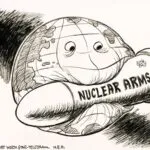

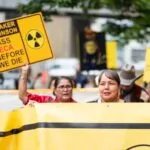


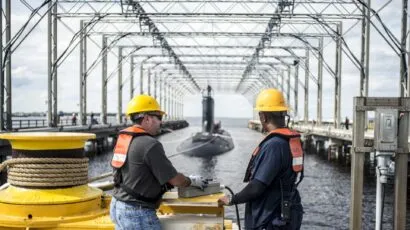



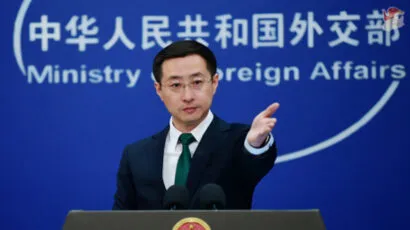



Before Trump’s allowed four years are up – not that this limit will matter – the Nuclear Clock will be very close to 60 seconds to Midnight.
You wait and see.
I politely disagree with Allison Macfarlane’s article, including its rather inflammatory title. The problem here is the use of sweeping statements that fail to explain exactly how requiring the Office of Management and Budget to review the obligations of independent regulatory agencies for consistency with the President’s policies and priorities will adversely impact the safe operation and licensing of our nuclear facilities. Maybe we should scratch the surface on this one just a bit. I know it’s been a few years since she was the chairman of the NRC, but perhaps Allison Macfarlane has forgotten that the NRC is headed by five… Read more »
So, Mr/Ms Macfarlane, what would you have done to prevent the Fukushima site incident? Who would you have spoken with relative to the collusion between the government, the regulators and TEPCO, and the lack of governance by said parties. Exactly what collusion are we referencing? Lack of governance by said parties – this tends to imply that the regulators did not do what was required. What does Japan have to do with the US Nuclear Program? Our nuclear program should not be governed by non-elected entities.
Unconvincing. Is the U.S. protected from a catastrophic accident or does it fihd a middle way between safety and cost? The problem of regulators captured by their industries is not discussed. It would be better to say if lowering government budgets is the object than the way to do it is x y and z. Attacking Trump may satisfy political beliefs but it will not get him to listen or to find solutions to the dilemmas he is creating.
Wake up and smell the coffee. We need more scrutiny and careful regulation, not less. Frankly, nuclear power is fraught with problems, not the least of which is containment of its waste products. But, as there is more pressure to create more nuclear power plants and bring old one back on line (for crypto? AI?) we would do well to watch closely and know what can go wrong.
Dr. Macfarlane, if anything, understates the problem and the risk. The NRC has long struggled to maintain safety against the influence of a powerful industry – often with insufficient success (see Davis-Besse). But now forces align in unprecedented fashion to make it a regulator in name only. I should add: The process has been an unholy bipartisan enterprise.